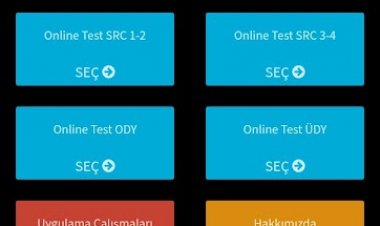Characterization of Turkish Astragalus honeys according to their phenolic profiles and biological activities with a chemometric approach
Characterization of Turkish Astragalus honeys according to their phenolic profiles and biological activities with a chemometric approach Küçükaydın, Selçuk; Tel-Çayan, Gülsen; Çayan, Fatih; Taş-Küçükaydın, Meltem; Eroğlu, Büşra; Duru, Mehmet Emin; Öztürk, Mehmet The genus of Astragalus provides a significant source of pollen and nectar for honeybees. In this study, 37 Astragalus honey samples in 8 different regions from Turkey were investigated for the phenolic compositions and antioxidant, antimicrobial, anti-quorum sensing, anti-inflammatory and enzyme inhibitory (urease, tyrosinase, butyrylcholinesterase (BChE), and acetylcholinesterase (AChE)) activities with chemometric approaches. Seventeen phenolic compounds and organic acids were detected using HPLC-DAD and levulinic, gallic, p-hydroxy benzoic, vanilic and p-coumaric acids were found to be common compounds in all studied Astragalus honey samples. The ET coded Astragalus honey sample from Erzurum showed the best antioxidant activity in DPPH• (IC50: 12.54 ± 0.25 mg/mL), ABTS•+ (IC50: 4.20 ± 0.12 mg/mL) and β-carotene linoleic acid (IC50: 3.85 ± 0.11 mg/mL) assays. Astragalus honey samples studied displayed moderate antimicrobial activity against Candida species, gram-negative and gram-positive bacteria while they showed high quorum sensing inhibition effects. The NB coded Astragalus honey sample from Niğde exhibited the highest anti-inflammatory activity against COX-1 (76.11 ± 0.80%) and COX-2 (55.98 ± 0.93%) enzymes. The studied Astragalus honey samples showed mild enzyme inhibitory activities against AChE, BChE, urease and tyrosinase. The chemometric characterization based on the botanical origin of Astragalus honey samples was determined using principal component analysis (PCA) and hierarchical cluster analysis (HCA).

Characterization of Turkish Astragalus honeys according to their phenolic profiles and biological activities with a chemometric approach Küçükaydın, Selçuk; Tel-Çayan, Gülsen; Çayan, Fatih; Taş-Küçükaydın, Meltem; Eroğlu, Büşra; Duru, Mehmet Emin; Öztürk, Mehmet The genus of Astragalus provides a significant source of pollen and nectar for honeybees. In this study, 37 Astragalus honey samples in 8 different regions from Turkey were investigated for the phenolic compositions and antioxidant, antimicrobial, anti-quorum sensing, anti-inflammatory and enzyme inhibitory (urease, tyrosinase, butyrylcholinesterase (BChE), and acetylcholinesterase (AChE)) activities with chemometric approaches. Seventeen phenolic compounds and organic acids were detected using HPLC-DAD and levulinic, gallic, p-hydroxy benzoic, vanilic and p-coumaric acids were found to be common compounds in all studied Astragalus honey samples. The ET coded Astragalus honey sample from Erzurum showed the best antioxidant activity in DPPH• (IC50: 12.54 ± 0.25 mg/mL), ABTS•+ (IC50: 4.20 ± 0.12 mg/mL) and β-carotene linoleic acid (IC50: 3.85 ± 0.11 mg/mL) assays. Astragalus honey samples studied displayed moderate antimicrobial activity against Candida species, gram-negative and gram-positive bacteria while they showed high quorum sensing inhibition effects. The NB coded Astragalus honey sample from Niğde exhibited the highest anti-inflammatory activity against COX-1 (76.11 ± 0.80%) and COX-2 (55.98 ± 0.93%) enzymes. The studied Astragalus honey samples showed mild enzyme inhibitory activities against AChE, BChE, urease and tyrosinase. The chemometric characterization based on the botanical origin of Astragalus honey samples was determined using principal component analysis (PCA) and hierarchical cluster analysis (HCA).

 Bilgi
Bilgi 














